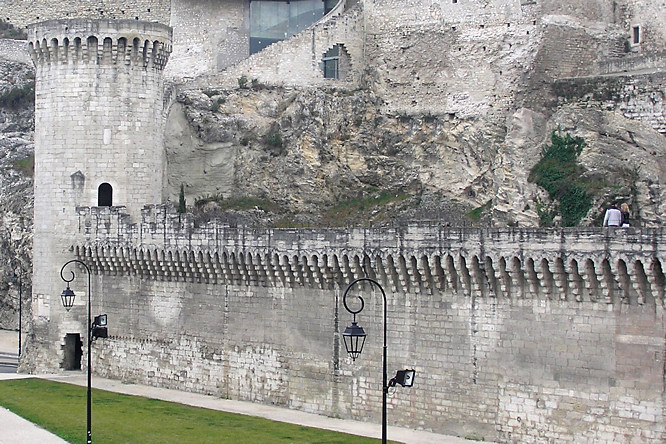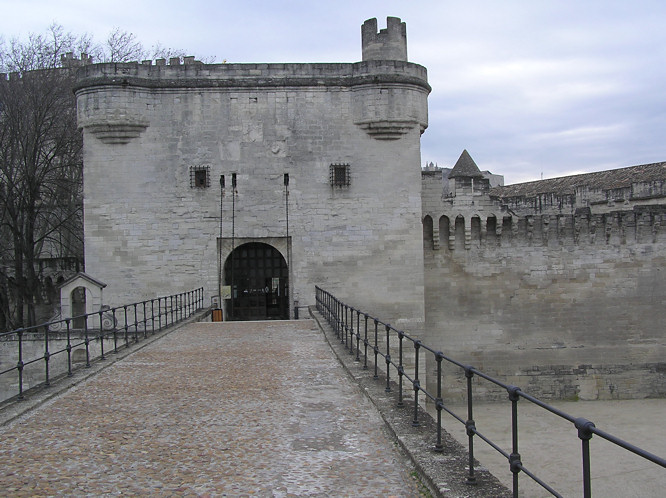Avignon Ancient Medieval City Walls
I love exploring cities with old defensive walls still standing. Avignon is one such city. In the north of the city of Avignon near the river is a rocky outcrop called the Rocher des Doms. On this stands the Pope's Palace and Cathedral.

As a defensible site this was the first part of the city to be settled. When the Roman Army occupied the city they first built a wooden stockade but then replaced it with a more permanent stone wall. The rectangular shape of the wall's outline conform to the standard pattern of a typical Roman Town Wall.
In the 13th century a double set of city walls around Avignon with moats were erected to protect the city, the innermost perimeter corresponding approximately to the Roman ramparts. In 1226, after a three month siege, the city capitulated to the king of France, Louis VIII, who knocked down a great portion of the walls and filled in the moats. The people of Avignon erected new ramparts between 1234 to 1237. They were 30 to 40 meters beyond the ruins of the earlier walls. At the corner of the rue Saint-Charles a fragment of this wall remains.

By 1355 new city walls had to be built as the population had grown so much that many houses had been built outside the old city walls. These longer walls are the ones you see today. It was the time of the Hundred Years War so the population needed protection. A large moat, 4 meters deep was designed to hinder access to the walls. The seven city gates were equipped with wooden vents spiked with iron and closed each evening. They were dominated by towers. The drawbridges were spiked and gateways protected by Portcullises as well as thick gates. The walls were approximately 8 meters high and had battlements on the top. There were slits from which weapons could be fired.
The new city wall of Avignon was reinforced with 35 high towers and 50 smaller, intermediary towers. Being of early design they are either square or rectangular, except for 3 semi-circular towers. (It was only after the Christian Knights came back form the Crusades did curved towers become popular. They had seen how effective they were at deflecting cannon balls).
Travel books

